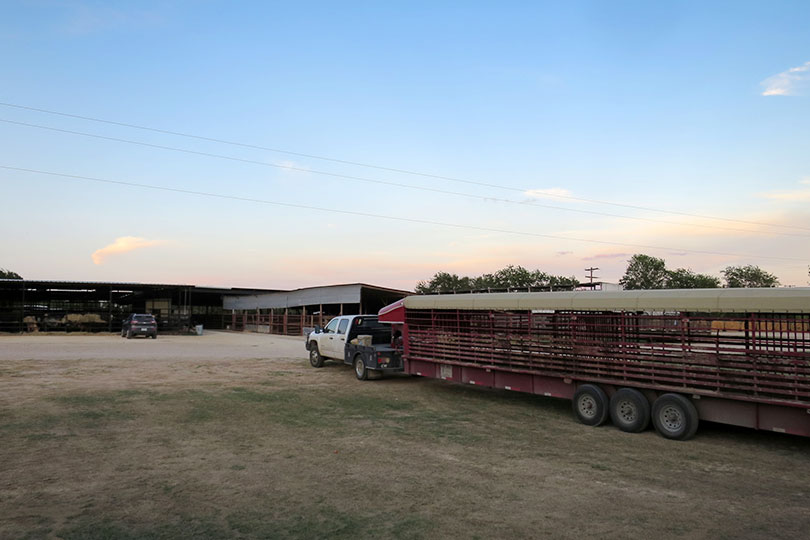By Carey Martin
TFB Radio Network Manager
Long lines at Texas livestock auctions made national news recently, as ranchers liquidate herds due to the ongoing drought. But the cattle market has held up surprisingly well this summer despite an increased number of cattle going to market.
“We have a huge amount of drought liquidation going on,” Texas A&M Livestock Marketing Specialist David Anderson said in an interview with the Texas Farm Bureau Radio Network.
But not all cattle sales are related to drought. Anderson noted it’s also a reflection of the lack of profitability in the cow-calf sector.
“Some of this liquidation of cows has to do with calf prices that have not kept up with higher input costs,” he said. “But certainly, drought is a huge part of this.”
The nation’s cow herd has been shrinking for the past two years, but this summer’s drought is sending much of the breeding herd to the processing plant. That will cut into calf numbers for the next two to three years.
“Beef cow slaughter has been running over 80,000 head a week,” Anderson said. “We’ve had several weeks in a row over that level, and that’s the biggest cow slaughter in a decade.”
That level of cow herd liquidation hasn’t been seen since the drought of 2011, and Anderson said a 4% decline in the nation’s cow herd could be expected next year.
In the northeast Texas Panhandle, ranchers are struggling with drought, but they’ve been luckier than most in the state.
“We’re in an isolated area, and it’s kind of an exceptional situation,” Hemphill County Extension Agent Andy Holloway said. “We’ve had about nine inches of rain here since the end of April. It’s been sort of a garden spot here compared to the rest of the area.”
Holloway said he’s hearing from ranchers across the state about the problems the drought is causing.
“Most people depend on dirt tanks or ponds to water their herds,” he said. “If they run out feed, hay and water, they don’t have a choice but to either move their cows somewhere or sell them.”
Over the past two weeks, the majority of cattle sold have been mature cows going to the packer, Holloway said.
While this is a sad situation for the Texas cattle sector, there could be a silver lining for those ranchers who can stay in business, Holloway noted. This is a scenario similar to the 2011 drought, where the cow herd was reduced, and cattle prices hit record highs in the years that followed.
“This is a scenario that is very similar to ’11 and ’12,” Holloway said. “Remember what happened in ’13, ’14, and ’15. They were record prices. I think we’re on a parallel trend to experience that again.”


So why is beef so expensive?
The cost of beef has increased for many reasons. The U.S. cattle herd has decreased more than 2% from from January 2021. That means fewer cattle for processing and less beef available in relation to steady consumer demand. Inflation has also increased the cost of everything related to raising, processing, packaging, delivering, beef to consumers. Though we are seeing more cattle go to markets today, beef production will not steadily increase enough supply of beef to offset demand for beef for a long while.
Well put.
2% doesn’t sound like much of a reduction in the US herd size but it really is. Especially if the herd size had slipped any at all in the previous few years. I don’t track that anymore. (No longer own cattle) So , can’t say.
I used to work on an energy trading floor for one of the top 3 oil & gas companies. 2 to 3 % imbalance between supply and demand, either short or long would generally be the point that prices would start to move up or down and sharply, too.
My Cousin has a 25,000-acre ranch northeast of Abilene and has sold most of his herd because of feed costs and the draught. He’s recovered before and will do so again, I think?